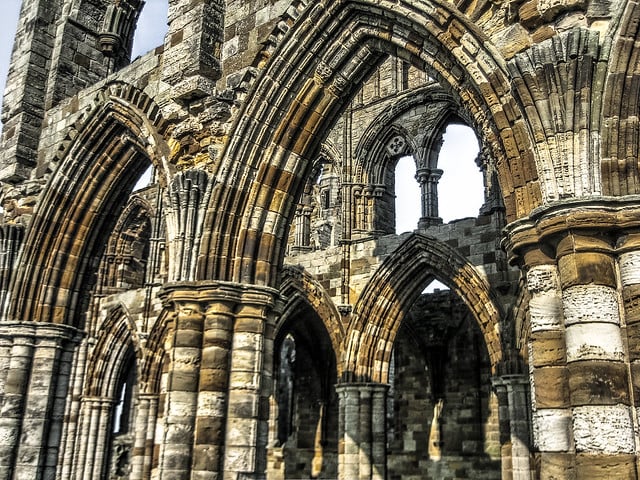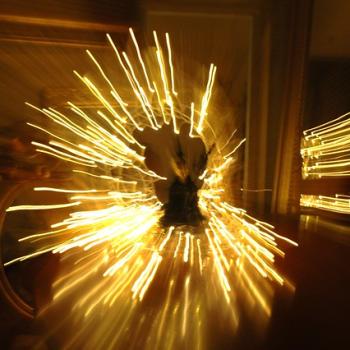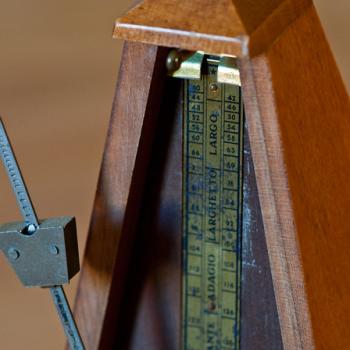
Creating Sacred Space and Time
We sometimes hear people talk about sacred spaces. Actors and directors tell us the theatre becomes sacred space for them. Some people describe places where boundaries between physical life and spiritual life become thin.
Spiritual life helps us create and appreciate sacred space and time.
Some of us have visited sacred space and experienced sacred time.
We come to a place where we can feel the presence of spiritual life. It may be a place where people have come together to worship or pray for hundreds of years. Some of us expect sacred places to have some history.
Others of us find sacred space waiting for us in unexpected places.
We may find sacred space in a building or somewhere outside. I know people who draw closer to spiritual life when they are in the woods, or the mountains, or at the beach.
Each of us has our own ideas about what sacred space is like, how it feels and where to find it.
Some of us discover it is within us.
Like sacred space, there are moments of awareness when time seems to stand still for us. The ways we usually experience it seem to melt away. Time appears not to follow the rules we try to impose on it in our everyday lives. It overflows its banks, or evaporates, or freezes.
Time escapes our expectations and is infused with spiritual life.
There are people who help us experience sacred time and space, help us recognize spiritual life. We share our stories, listening and asking questions, laughing together and crying together.
Sacred time and space are where and when we recognize spiritual life swirling around us and filling us.
What makes the difference between space and time which are sacred and other time and space?
Everyday Sacred Space and Time
Some of us have particularly clear rules for ourselves about what makes time or space sacred. We believe certain buildings, or kinds of buildings, are sacred spaces. Some of us have been taught some ways we spend our time are sacred while other ways are not.
I am learning sacred time and space do not work like that. It is more and more difficult for me to find the line between what is sacred and what is not.
Yes, there are places we can go and ways we can spend our time which are not helpful, but harmful. The challenge for me is when people go places they believe are sacred and act in ways which hurt people.
Do they believe doing things in a space they believe is sacred makes their behavior sacred?
As far as I can tell, what makes space and time sacred is how we experience them. We recognize spiritual life is everywhere, all around us and within us, and we open ourselves to it. Some of us try to develop specific habits to help us be more open to spiritual life.
Being sacred is not a matter of our conviction or our zeal in how we enter a space or spend our time. Contemplative practices help us remember and recognize how spiritual life is alive in the world.
We practice being open to spiritual life and begin to appreciate how it surrounds and fills us.
It can take us a long time to begin to understand spiritual life is not about arbitrary rules and limitations. We discover a relationship to spiritual life different from the one we thought we had.
Sacred space and time are not what we expected them to be, not what we thought they were.
Spiritual Life Creates Sacred Space and Time
We are transformed by spiritual life. As we practice being open to spiritual life we recognize more clearly how it is at work in us.
Spiritual life is not a system of rules to follow, not a list of concepts to believe, not minimum standards we need to meet. We are in a relationship with spiritual life and it recreates us from the inside out.
Ordinary, familiar places reveal themselves to us as sacred spaces. We realize our routines and schedules are full of sacred time.
The challenge for me is not finding sacred space and time, but paying attention and appreciating what is already there. Spiritual life is constantly surprising me in new ways. Places and experiences I thought were familiar reveal themselves to be sacred in ways I never recognized before.
We do not need to seek new ways to discover sacred space and time. Spiritual life is not hidden in distant places or new experiences. We live in sacred space and time wherever and whenever we are.
Spiritual life is creating sacred space and time in our lives. As our relationship with spiritual life grows more intimate we appreciate the reality of sacred time and space.
Living in Sacred Space and Time
Spiritual life will not force us into a relationship.
It is easy for us not to pay attention. We are distracted by whatever attracts our attention for a moment and we forget the deep reality of spiritual life.
Part of living in sacred space and time is developing our capacity to pay attention. We practice remembering there is more to life than our own immediate experiences.
Learning to pay attention is why so many traditional spiritual practices are built around going without something. Each one is a way to practice intentionally paying attention to our relationship with spiritual life.
We choose to let go of things which demand our attention. Going without food we pay attention to how spiritual life lives in our bodies. Listening to sacred stillness we pay attention to truths deeper than words. Each contemplative practice gives us opportunities to live in sacred space and time.
The things we practice giving up are not necessarily wrong or harmful in themselves. They get in the way of sacred space and time.
When and where will we experience sacred space and time today?
How will we live in sacred space and time this week?
[Image by kseniabramley]
Greg Richardson is a spiritual life mentor and coach in Southern California. He is a recovering attorney and a lay Oblate with New Camaldoli Hermitage near Big Sur, California. Greg’s website is StrategicMonk.com and his email address is [email protected].












